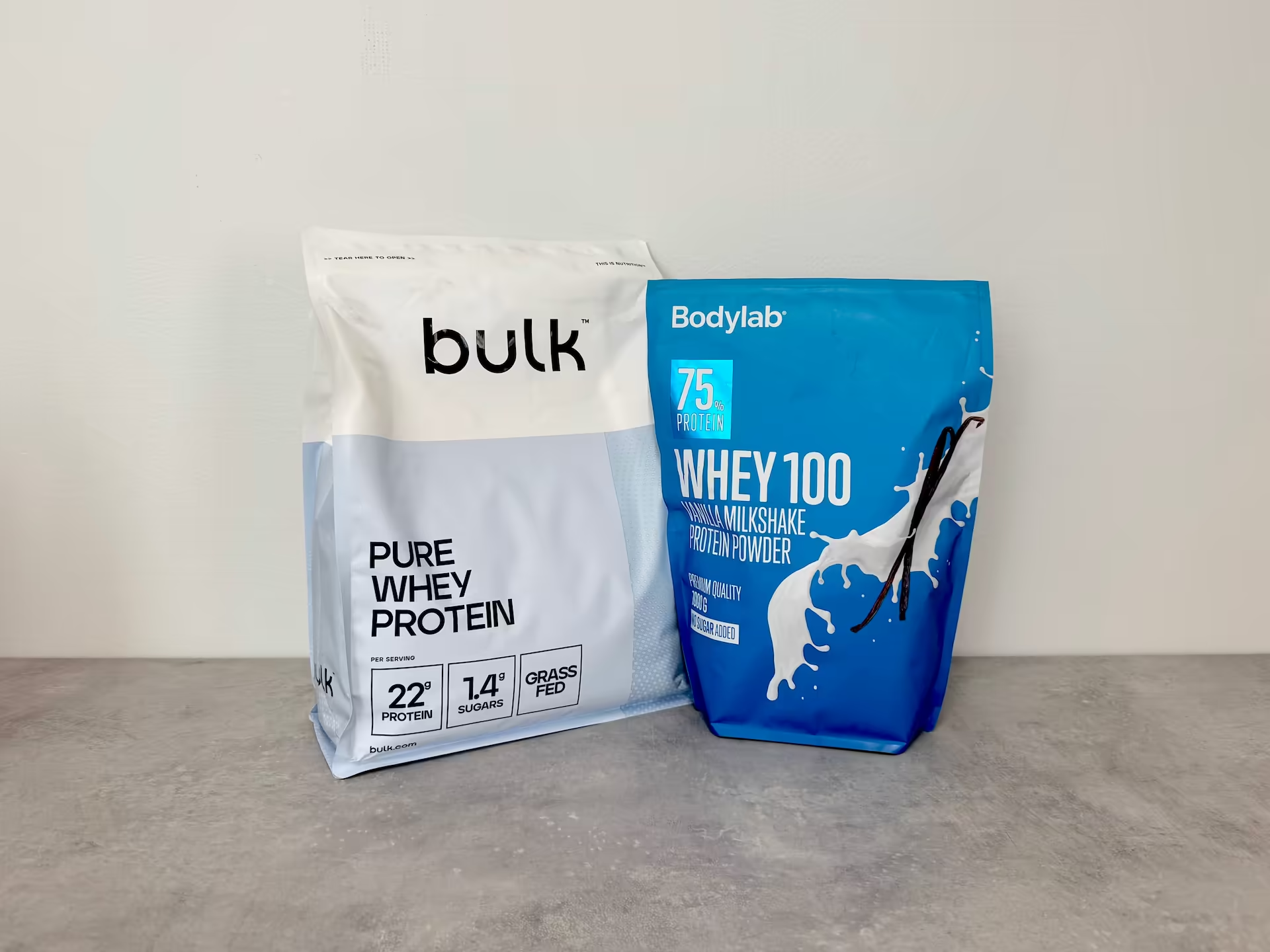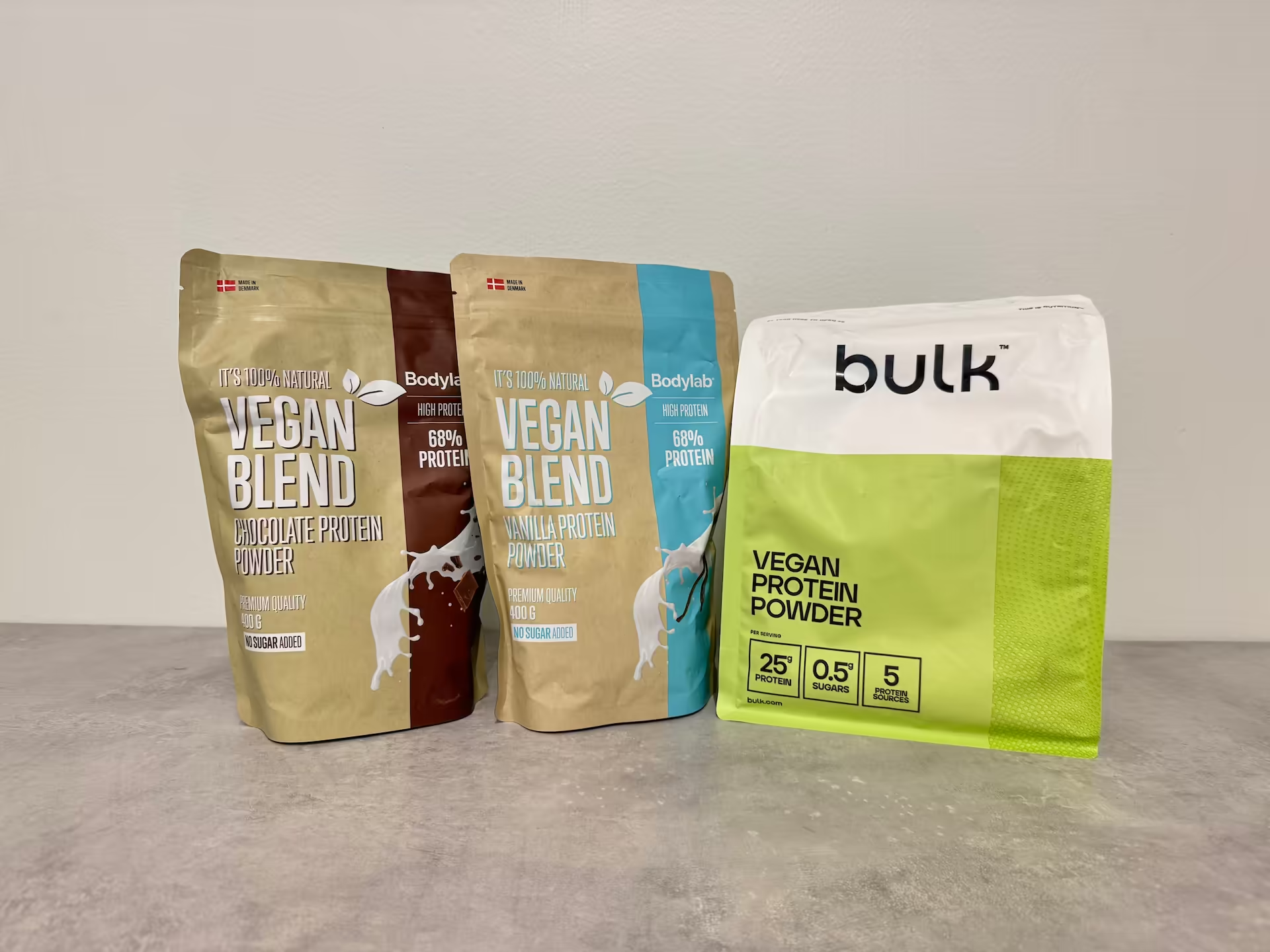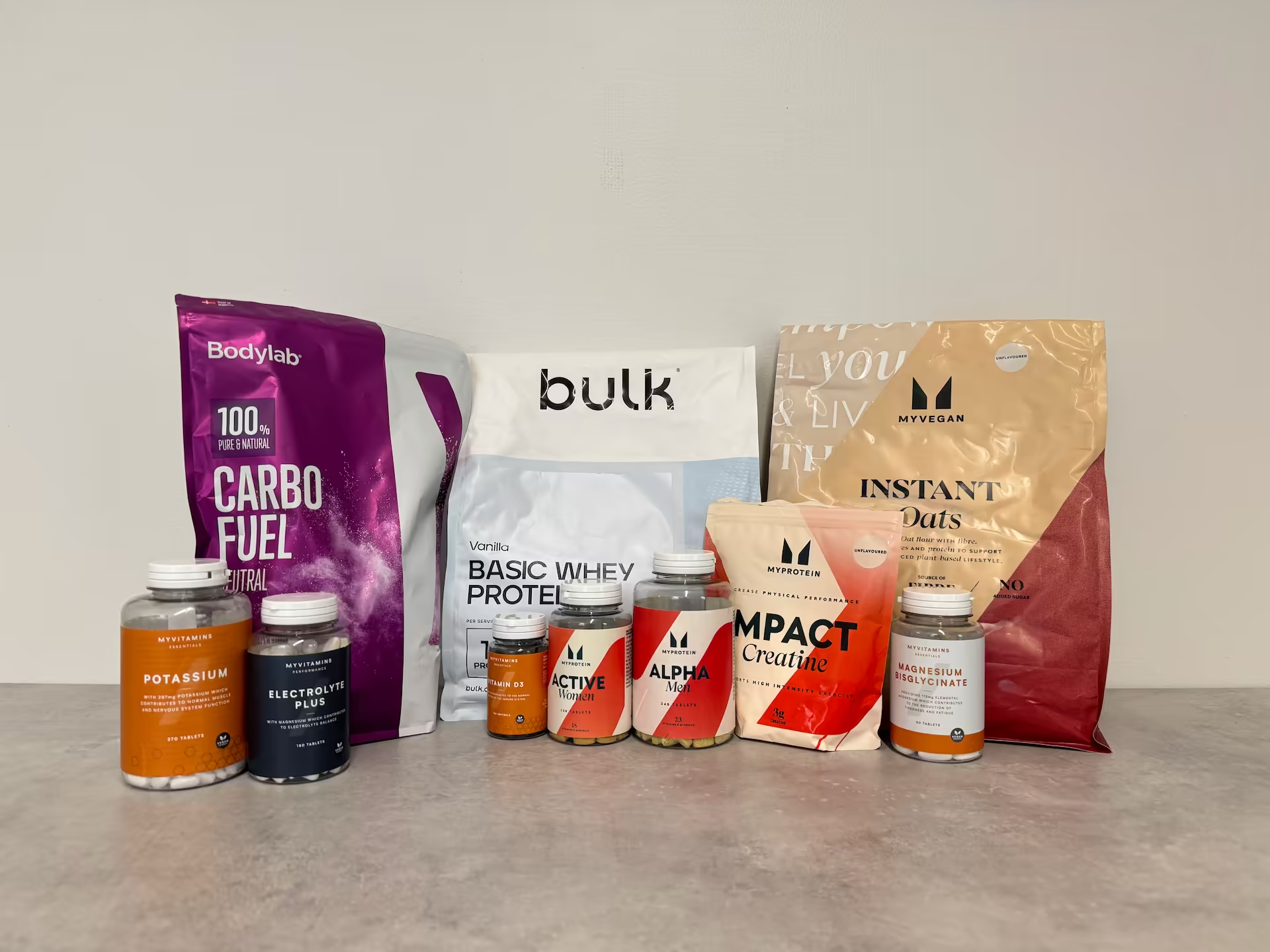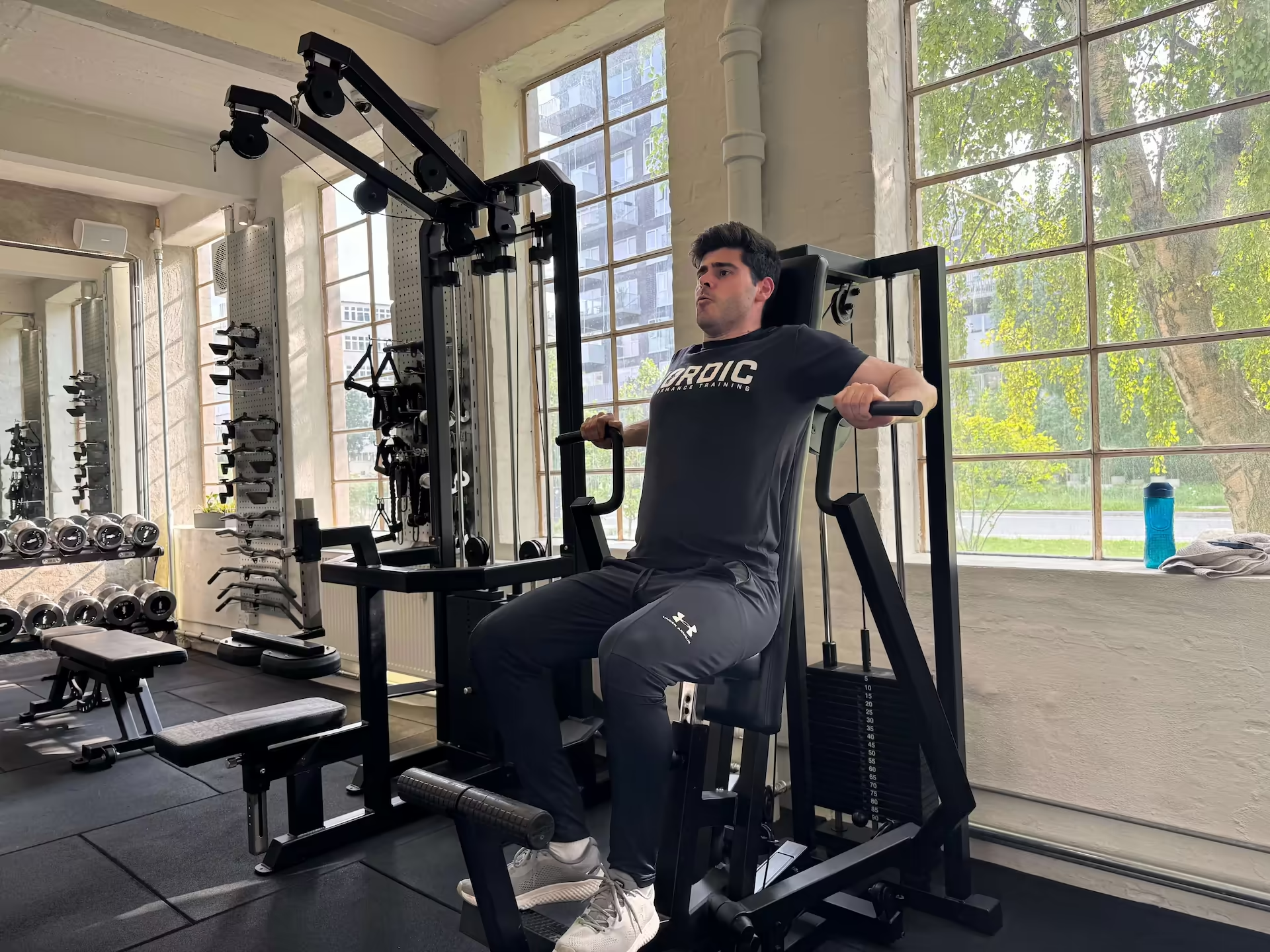Protein Powder Guide: When You Need It (and When You Don't)
With over 10 years of experience as personal trainers and physiotherapists and more than 3,000 clients at Nordic Performance Training, we've seen the same pattern again and again: People are confused about protein powder even before they know if they need it at all.
Last week, a client asked: "I can't make heads or tails of what works, how it works, and where I dare to buy from. Is protein powder even something for me?"
We get this classic question often. The supplement industry wants you to believe that protein powder is essential for muscle growth and health. But our experience shows something else: Most people could achieve better results by optimizing their actual diet rather than adding more products to the cabinet.
This guide helps you assess whether you actually need protein powder – and if yes, which one you should choose and how to use it optimally.
Do you even need protein powder?
The first question we ask new clients who inquire about the importance of protein – especially in relation to strength training and muscle building – is not: "Which protein powder do you use?" but rather: "How much protein do you get through regular food daily?"
Client case: Unnecessary "insurance"
Recently, we met a 39-year-old project manager who had used protein powder for over a year. When we reviewed his actual diet, it turned out he already got 150 g protein daily through grains, legumes, eggs, yogurt, and meat – more than sufficient for his 75 kg body weight.
"But I just want to be sure I get enough protein," he explained.
This is the classic pattern: People use protein powder as a form of "insurance" – without really knowing what they're insuring against.
Simple test before buying protein powder
- Weigh your protein sources for a week
- Calculate your daily protein intake
- Compare with your need: 1.6–2.2 g per kg body weight
- Doesn't need to be precise, but create an overview
Protein needs based on body weight:
- 50 kg person: 80–110 g protein daily
- 60 kg person: 96–132 g protein daily
- 70 kg person: 112–154 g protein daily
- 80 kg person: 128–176 g protein daily
- 90 kg person: 144–198 g protein daily
- 100 kg person: 160–220 g protein daily
Example: For a 70 kg person, this corresponds to 112–154 g protein daily. If you already hit this number through food, protein powder is a waste of money.
The reality from our client data
Pattern we see again and again:
- ~50% of new clients think they need protein powder
- ~25% actually have a real need based on their protein intake
- ~75% would benefit more from optimizing meal timing
The biggest problem: Those who don't eat a protein-rich breakfast often struggle to catch up later in the day.
Read our article 5 High-Protein Breakfast Recipes for inspiration.
The remaining ~75% would benefit more from optimizing their meal timing – for example, by eating a proper meal with a good composition of proteins and carbohydrates before training to maximize performance.
Read more in our guide Best Pre-Workout Meal Before Strength Training.
An important point: When it comes to building muscle, it's far more important to be able to perform and train relatively hard than just consuming large amounts of protein. A high protein intake is irrelevant if you haven't created a need for it through strength training.
Need a training program? Read our Full Body guide, which contains three free training programs and explains our structured approach to strength training.
And if you want a complete overview of supplements, read What Are Supplements?
3 situations where protein powder actually makes sense
Although most people don't need protein powder, there are situations where it can be a practical solution. Here are the 3 scenarios from our practice where we recommend it:
Scenario 1: You're consistently under 1.6 g protein per kg body weight
A 32-year-old IT consultant came to us after 8 months of regular strength training without visible results. We started by structuring his strength training better, and during the first sessions we talked about his dietary habits and found out that:
- Breakfast: Often just a large cup of coffee or energy drink
- Lunch: Rich in vegetables, salads, and carbohydrates, but poor in protein sources
- Dinner: Pizza, pasta, rice dishes with a little meat
His daily protein intake was only ~65 g – approximately 0.8 g per kg body weight. This is very low if you're trying to optimally build muscle and strength.
We helped him with simple adjustments:
- Protein-rich breakfast (inspiration from our article on high-protein breakfast meals)
- 2 scoops protein powder as a snack at work
- More protein sources for dinner
- Possibly skyr with muesli as an evening snack
This raised his intake to ~145–160 g daily (1.8–2.0 g/kg). Combined with structured strength training, he saw significant muscle growth in just 6 weeks.
When it makes sense: If you consistently fall below 1.6 g protein per kg body weight, and it's difficult to reach the goal through regular food alone.
Scenario 2: Practical post-workout protein or busy workdays
A 29-year-old doctor trained at 6 a.m. before 12–14 hour shifts. She had no appetite for a large meal immediately after training but needed protein before and during the long workday.
Here protein powder made perfect sense:
- 30–40 g protein (1 large scoop) + 300 ml milk before she left home (~40 g protein total)
- One more large scoop (~30 g protein) when she had time during the shift
- Now she had important amino acids for recovery during the shift
When it makes sense: Your schedule makes it impossible or impractical to eat full meals around training and continuously throughout the day.
Scenario 3: Vegetarians/vegans with limited protein variation
A vegan client struggled to get varied protein sources. Although he ate plenty of legumes and nuts, he often lacked complete amino acid profiles and rarely hit his protein needs.
A plant-based protein powder (pea+almond or pea+soy combinations) gave him:
- Complete amino acid profile
- Practical way to increase protein intake
- Less mental burden around constantly having to vary protein intake
Alternative solutions to consider first:
- Combine legumes with grain products
- Increase portion sizes of existing protein sources
- Add more varied plant-based sources
Whey vs. plant-based: What should you choose?

Whey protein isn't popular because it's trendy – it's popular because it works. It has the most complete amino acid profile, is absorbed quickly, and has the most documented effect on muscle growth.
Whey Concentrate:
- 70–80% protein
- Contains some lactose and fat
- Cheaper and fine for most people
Whey Isolate:
- Often over 90% protein
- Minimal lactose
- Choose this with lactose intolerance or if you want to minimize extra calories
Client case: A client with mild lactose intolerance experienced discomfort with whey concentrate but no problems with whey isolate. Price difference: Around 100 kr/month extra – which was worth it for him.
Who should choose Whey: Most people who can tolerate dairy products and want the most documented effect.
Plant-based: Soy, pea, almond, and rice combinations

Plant-based protein powders like pea, rice, and soy can provide a complete amino acid profile when combined – a good alternative to whey for vegans or those with lactose intolerance.
Comparison of plant-based protein powders and their properties
Who should choose plant-based: Vegans, people with lactose intolerance, or those who prefer plant-based products for ethical reasons.
Other types: Casein, collagen, beef protein, and clear whey

Casein
Marketed as "slow night protein" to "nourish muscles through the night." But research shows that the difference between fast and slow protein is less significant than the industry claims – and for practical purposes almost irrelevant.
Clear Whey
Whey isolate made as a clear, light drink with fruit flavor. Tastes like lemonade rather than milkshake. Not better than classic whey – just an alternative for those who prefer refreshing taste. Almost lactose-free. Often 70–100% more expensive than standard whey.
Beef Protein
Lactose-free protein powder extracted from beef. Popular among people with milk allergy but has distinct meaty aftertaste. 100% lactose-free with complete amino acid profile.
Collagen Protein
Extracted from skin, bones, and connective tissue. Marketed for skin, joints, and connective tissue, but evidence is limited. Problem: Lacks essential amino acids.
The reality behind niche protein products
These niche products arise primarily to differentiate in a saturated market – not because they provide greater physiological benefits than standard whey or plant-based alternatives.
Our recommendation: Focus on the basics. Whey or plant-based. The rest is probably just marketing at premium prices.
Dosage, timing, and practical use

After thousands of clients, we've learned that simple approaches work best for most people.
30–40 g per portion: Optimal for muscle growth
Studies show that 30–40 g protein maximizes muscle protein synthesis in most adults.
What happens with more protein? The body absorbs it, but it doesn't give a greater effect on muscle growth. It's either used as energy or stored as fat.
Timing: Practical over perfect
"The anabolic window" – the idea that you must have protein precisely 15–30 minutes after training – is vastly exaggerated. The window is closer to 2–3 hours, and here we're talking exclusively about optimization.
Our observations from practice:
- Post-workout: Practical and can help recovery, but not critical
- Between meals: Often the best solution – doesn't disturb normal meals
- As meal replacement: Avoid this. Protein powder lacks fiber, vitamins, and minerals
Practical use that works
Many of our busy clients use this routine below.
Weekdays without planned training:
- 30–40 g protein powder (~1 large scoop) + 300 ml milk at 3:30 PM (between lunch and dinner)
- Covers ~40 g protein + provides stable energy until late afternoon
- Doesn't disturb normal meals
Weekdays with planned training after work:
- 30–40 g protein powder (~1 large scoop) + 300 ml milk at 3:30 PM
- Add 1–2 scoops instant oats (blended oats) or 2 pieces of fruit
- Covers ~40 g protein + ~40 g carbohydrates
- Provides extra energy for training without disturbing normal meals
Important note: You can advantageously add 5 g creatine to this shake.
This pattern – protein powder as "snack" or between meals rather than meal replacement – works really well for our clients.
If you've determined a real need – choose wisely
Now that you've assessed your diet and concluded that a protein powder can actually make sense in your situation, the next step is to choose a product that is well-documented, safe, and practical in everyday life.
Recommended protein powders
The table below provides an overview of reliable whey and vegan protein powders that meet both nutritional and quality requirements.
The table compares type, protein content per scoop, key benefits, and estimated price per month with daily use (~30 g/day).
Summary – where can you buy them?
All five products can be purchased directly from the manufacturer. We recommend comparing price and flavor variants, as there are often promotional offers:
- Bodylab Whey 100 – Danish-produced, high quality and many flavor variants
- Myprotein Impact Whey – budget-friendly and reliable choice
- Bulk Pure Whey Protein – pure, simple formula without unnecessary additives
- Bodylab Vegan Protein Blend – complete vegan protein profile
- Bulk Vegan Protein – pea-based, high quality at low price
Why only these brands?
We could list 15 different brands, but that just creates confusion. All the above brands deliver reliable quality at fair prices. The trainers at Nordic Performance Training use these brands themselves and most often just choose based on where there's the best offer at the time of purchase.
Tip: Always check the price per 100 g protein – it gives a more accurate picture of value than the kilo price alone.
Most important quality markers
- Preferably minimum 20 g protein per 30 g portion
- Quality control and certifications
- Precise nutrition information on the label
- Established brand with traceable production
Avoid these
- Products with "proprietary blends" (secret mixtures)
- Extremely cheap products from unknown manufacturers
- Products that promise "instant results"
Frequently asked questions about protein powder
Is protein powder good for weight loss?
Yes, protein powder can help with weight loss – but not because it burns fat by itself. Protein increases satiety, stabilizes blood sugar, and has a thermic effect of 20–30%, so the body uses more calories on digestion. The most important thing, however, is still your total calorie intake: a shake of 400 kcal counts the same as a meal of 400 kcal.
Which protein powder should you choose?
Choose a powder you tolerate and will use consistently:
- Whey concentrate: Best documented and works for most people
- Whey isolate: For you who are lactose intolerant
- Plant-based (pea + rice): Ideal for vegans; provides complete amino acid profile
Avoid expensive "superfood blends" – the difference in results is minimal.
Is it healthy to drink protein powder every day?
Yes, for most healthy adults it's completely safe – as long as it supplements normal food and doesn't replace it. International recommendations say 1.6–2.2 g protein per kg body weight for strength trainers. Protein powder only provides protein, not fiber, vitamins, or minerals, so at least 70% of your daily protein should come from real food.
When should you take protein powder?
Take it when it fits best in your day – timing is far less important than many think. The "anabolic window" after training lasts several hours, not 30 minutes. A protein shake often works perfectly as a practical snack between meals.
How much protein powder should you take per day?
Most people get the best effect from 30–40 g protein per portion, which maximizes muscle protein synthesis. More doesn't give extra muscle growth. If you need 40 g extra protein daily, take 1 portion; 60 g extra requires 2 portions distributed throughout the day.
Can protein powder replace meals?
No – protein powder should not replace real meals. A shake lacks fiber, vitamins, minerals, and satiety. Use it as a supplement, not a replacement – the exception is early morning training where appetite is lacking, and a shake is a temporary, practical choice.
Conclusion: Start by assessing your actual diet
The most important point: Assess your actual diet before you buy protein powder. For most people, it's not necessary – but when you have a real need, it can be a valuable supplement.
Before you buy
- Track your protein intake for a week
- Calculate if you hit 1.6–2.2 g per kg body weight
- If no: Can you reach the goal by adjusting regular meals?
- If it's impractical: Then protein powder makes sense
Choose simply
- Whey concentrate for most people
- Whey isolate with lactose intolerance
- Plant-based pea+rice combination for personal reasons
Use practically
- 30–40 g per portion
- Between meals rather than as meal replacement
- Timing less important than daily total
Protein powder isn't magical – it's practical. When you have a real need, it can be a valuable supplement to your diet. But it can never replace basic good nutrition and regular training.
Want to know more about other supplements? Read our complete guide: What Are Supplements? Or Top 5 Best Supplements for Health and Training.
Still unsure what makes sense for you? Book a free start-up conversation at Nordic Performance Training, and we'll help you start the right training plan.
References
Morton, R.W. et al. (2018). A systematic review, meta-analysis and meta-regression of the effect of protein supplementation on resistance training-induced gains in muscle mass and strength. British Journal of Sports Medicine, 52(6), 376-384. https://bjsm.bmj.com/content/52/6/376
Schoenfeld, B.J. & Aragon, A.A. (2018). How much protein can the body use in a single meal for muscle-building? Implications for daily protein distribution. Journal of the International Society of Sports Nutrition, 15(1), 10. https://pubmed.ncbi.nlm.nih.gov/29497353/
Helms, E.R., Zinn, C., Rowlands, D.S., & Brown, S.R. (2013). A systematic review of dietary protein during caloric restriction in resistance trained lean athletes: A case for higher intakes. International Journal of Sport Nutrition and Exercise Metabolism, 32(6), 421-436. https://pubmed.ncbi.nlm.nih.gov/24092765/
Kerksick, C.M., Wilborn, C.D., Roberts, M.D., et al. (2018). ISSN exercise & sports nutrition review update: Research & recommendations. Journal of the International Society of Sports Nutrition, 15(1), 38. https://pubmed.ncbi.nlm.nih.gov/30068354/
Rizzo, G., Laganà, A.S., Rapisarda, A.M.C., & Frigerio, G. (2016). Vitamin B12 among vegetarians: Status, assessment and supplementation. Nutrients, 14(5), 956. https://pubmed.ncbi.nlm.nih.gov/27916823/
Related Blog Posts
.svg)
.svg)

.svg.webp)












